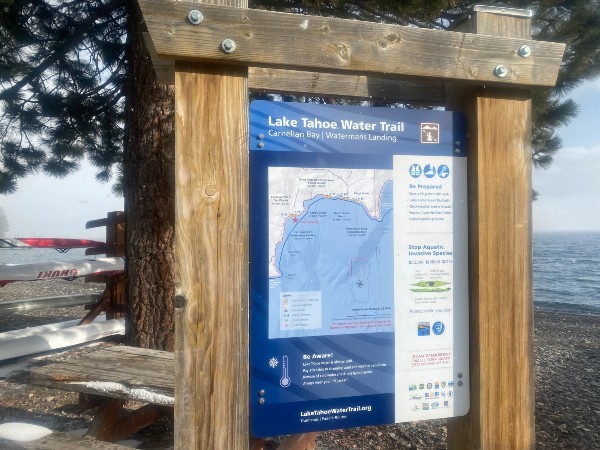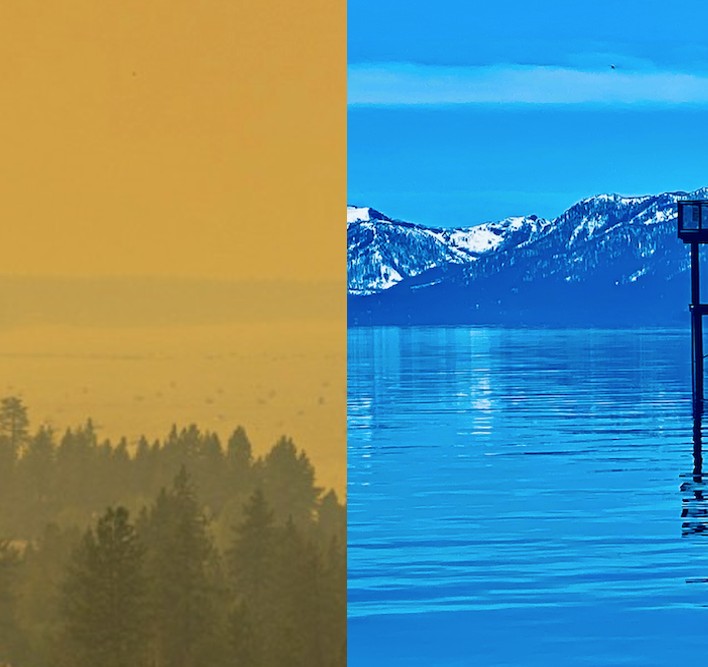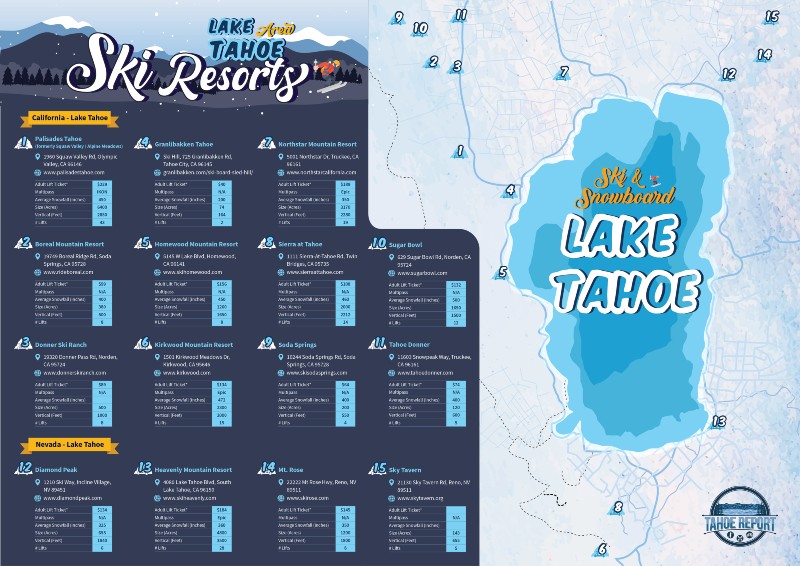Article Quick Links - Post Table of Contents
Lake Tahoe Statistics | Lake Tahoe Facts
Lake Tahoe Statistics, Facts, Infographics and more
Lake Tahoe is the largest Alpine Lake in North America and the Jewel of the Sierra. Surrounded by the Sierra Nevada mountains and sharing a border with both California and Nevada, Lake Tahoe, the second deepest lake in the United States is a must visit. Learn more about the lake with Lake Tahoe Statistics and Lake Tahoe facts.
How was Lake Tahoe formed?
While a common belief is that lake Tahoe was formed by the collapse of a volcanic crater, according to the U.S. Forest Service the Tahoe basin was actually created due to faulting related to the tremendous uplifting of the Sierra Nevada mountains. From Mt. Pluto lava flows blocking the only outlet, to ice age glaciers to erosion, present day Lake Tahoe was formed. Below are some Lake Tahoe statistics to further entice you to visit.
Lake Tahoe Statistics & Common Questions:
Where is Lake Tahoe? 2/3 in California, 1/3 in Nevada. Have a look at Google Maps Here
Lake Tahoe Elevation: Natural rim of the surface is at 6,223 feet (1.897 meters)
Maximum Depth: 1,645 feet (deepest point is actually lower than the Carson Valley floor in Nevada)
Average Depth: 1,000 feet
Lake Tahoe Clarity: According to UC Davis the 5 year running mean is 67.3 feet. Annual fluctuations are common: For example: 2019 was 62.7 feet. Lowest recorded was 2017 at 60 feet.
Size of Lake Tahoe: 22 miles long and 12 miles wide with approximately 72 miles of shoreline
Amount of water in the Lake Tahoe: 41 trillion gallons
What is the water temperature of Lake Tahoe. Lake Tahoe water temperature is always “refreshing”: Average Surface 51.9 F, Average Surface Temperature in July 64.9 F
Average Annual Snowfall: 409 inches = 34 feet | 1.038 Centimeters = 10,4 meters
Highest Peak: Freel Peak (10,886 feet = 3.318 meters)
Nearest Airport: Reno – Tahoe International (RNO)
Lake Tahoe Water Temperature by Month (°F)
| Month | Water Temperature High (°F) | Average Water Temperature (°F) | Water Temperature Low (°F) |
| January | 41.7 | 40.6 | 39.9 |
| February | 40.1 | 39.9 | 39.6 |
| March | 43.5 | 41.2 | 39.7 |
| April | 49.5 | 45.9 | 43.2 |
| May | 58.3 | 53.1 | 48.7 |
| June | 67.5 | 61.5 | 56.7 |
| July | 73.8 | 69.6 | 65.3 |
| August | 73.8 | 71.4 | 69.1 |
| September | 72 | 68 | 64.6 |
| October | 66.2 | 60.6 | 55.4 |
| November | 56.7 | 51.4 | 46.8 |
| December | 46.9 | 43.9 | 41.5 |
Lake Tahoe Water Temperature by Month (°C)
| Month | Water Temperature High (°C) | Average Water Temperature (°C) | Water Temperature Low (°C) |
| January | 5.4 | 4.8 | 4.4 |
| February | 4.5 | 4.4 | 4.2 |
| March | 6.4 | 5.1 | 4.3 |
| April | 9.7 | 7.7 | 6.2 |
| May | 14.6 | 11.7 | 9.3 |
| June | 19.7 | 16.4 | 13.7 |
| July | 23.2 | 20.9 | 18.5 |
| August | 23.2 | 21.9 | 20.6 |
| September | 22.2 | 20 | 18.1 |
| October | 19 | 15.9 | 13 |
| November | 13.7 | 10.8 | 8.2 |
| December | 8.3 | 6.6 | 5.3 |
Best Season: Tahoe has something for every season and everyone. Summer (most popular), Winter (very popular winter sports destination), and the calmer shoulder seasons of Fall and Spring which each have their own charm.
Things to do in Lake Tahoe: Skiing, Swimming, Snowmobiling, Kayaking, Mountain Biking, Hiking, Sailing, Boating, Wakeboarding, Waterskiing, Rock Climbing, Beach Volleyball, SUP – stand up paddle boarding, gambling, sampling some great food and drink, or just relaxing. At Tahoe Report we are here to help with resources and ideas that can help you make the most of your visit to Lake Tahoe.
The best way to learn about Lake Tahoe is to visit and get a chance to experience the crystal blue waters, the mountains, and all of the options for recreation in Lake Tahoe. And in between you can read about the Official Monster of Lake Tahoe: Tahoe Tessie (ok, just for fun check out The Truth Behind Tahoe Tessie)
For information about Things to Do in Lake Tahoe: CLICK HERE
For access to Tahoe Travel Resources: CLICK HERE
Lake Tahoe Facts & Statistics: Infographic
Water

Guide to Paddling Lake Tahoe in Any Season
Tips to Paddling Lake Tahoe Any Time of Year A lot of people visit or move to Lake Tahoe for access to the...

Guide to Paddling Lake Tahoe in Any Season
Tips to Paddling Lake Tahoe Any Time of Year A lot of people visit or move to Lake Tahoe for access to the...

Lake Tahoe Webcams | Live Look at Lake, Road and Mountain Conditions
What are the Current Conditions on Lake Tahoe? Whether planning your day in Lake Tahoe or just daydreaming from your...

Ski Resort Guide | Lake Tahoe – California – Nevada
Guide to Lake Tahoe Ski Resorts | Lake Tahoe Skiing FAQ The Lake Tahoe area has an incredible concentration of ski...
